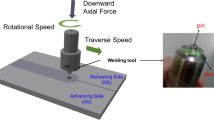Abstract
Shearing is particular economic for the production of forging raw parts but not implemented as an industrial production process because of insufficient shear qualities. To take advantage of the shearing of aluminium alloys, an experimental shear tool is developed. With this tool the fracture mechanism during the shearing process and the influencing parameters on the shear plane quality of aluminium alloys are investigated fundamentally. The considered influencing factors include especially the shear rate, the shear clearance and the microstructure of the raw part material. Those factors are investigated for several technically relevant alloys. The determination of the basic principles in combination with practical experiments allows an assessment of the shearing process for aluminium applications. Within the performed investigations, all considered experimental parameters show an effect on the shear quality. Particularly the shear clearance proves to be the most distinctive parameter to influence the result of the shear result.















Similar content being viewed by others
References
Ostermann F (2007) Anwendungstechnologie aluminium, 2nd edn. Springer, Berlin
Doege E, Behrens B-A (2007) Handbuch umformtechnik—Grundlagen. Technologien, Maschinen
Klein R (1987) Rohteile für die Schmiedetechnik—Volumengenau Scheren, Industrie Anzeiger 77/1987, Gevelsberg
Scheuermann H. (1974) Untersuchung des Eigenspannungszustandes gescherter Abschnitte von Stahlknüppeln, Dissertation der TU Hannover
Hartke G. (1987) Volumengenaue Knüppelabschnitte durch Scherschneiden, Fortschritts-Bericht VDI Reihe 2 Nr. 134, VDI Verlag Düsseldorf
Doege E. (1989) Wechselwirkungen zwischen Werkstückeigenschaften und dem System Werkzeug/Maschine beim Knüppelscheren, DFG-Forschungs-vorhaben Do 190/45 Schlussbericht
Fleischer H. (1991) Rohteilqualität beim Scheren von Knüppelhalbzeug, Fortschritts-bericht VDI Reihe 2 Nr. 212, VDI-Verlag Düsseldorf
Siegert K. , Jamander, K. (2001) Abscheren metallischer Werkstoffe bei unterschiedlichen Spannungen, Geschwindigkeiten und Temperaturen, Konferenz-Einzelbericht: Erweiterung der Formgebungsgrenzen bei Umformprozessen, 11/12 Sep. 2001, Bonn
Bräunlich B, Kirtsch W, Meinhardt W (1987) Knüppelscheren und Schneidlinien aus erfurt, umformtechnik, band 21. Heft 5:208–217
Kienzle O, Zabel H (1964) Zerteilen metallischer stangen durch abscheren. Dissertation, Hannover
Lange K (1988) Umformtechnik: Handbuch für industrie und wissenschaft, band 2: massivumformung. Springer-Verlag, Berlin
Spur G. , Stöferle, T. (1982) Handbuch der Fertigungstechnik Band 2/2 Umformen, Hanser München
Drossel G (2009) Aluminium Taschenbuch 2—Umformen von Aluminium-Werkstoffen, Gießen von Aluminium-Teilen, Oberflächenbehandlung von Aluminium, Recycling und Ökologie, 16th edn. Aluminium-Verlag, Düsseldorf
Acknowledgments
The presented investigations were carried out within the German Research Foundation (DFG) project no. Be-1691-27-1 “Untersuchung des Scherverhaltens von Aluminiumlegierungen”. We are thankful for the assistance provided.
Author information
Authors and Affiliations
Corresponding author
Rights and permissions
About this article
Cite this article
Behrens, BA., Lippold, L. & Knigge, J. Investigations of the shear behaviour of aluminium alloys. Prod. Eng. Res. Devel. 7, 319–328 (2013). https://doi.org/10.1007/s11740-013-0450-x
Received:
Accepted:
Published:
Issue Date:
DOI: https://doi.org/10.1007/s11740-013-0450-x




